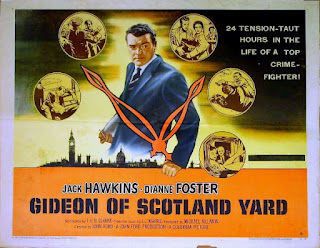With so many
zombie films hitting screens over the last few years, to stand out from the
crowd nowadays, you really need a gimmick. Rushed into production to cash in on
the death of Osama Bin Laden at the hands of the US Military, Osombie has an
intriguingly offbeat and poor taste premise, but the script, the actors and the
special effects are not up to fleshing this out into an entertaining full
length feature, and the end result is surprisingly boring.
The action kicks
off with US Special Forces storming Bin Laden's secret hideout in Pakistan to
capture or kill him, and coming up against a horde of walking corpses, a result
of Bin Laden’s experiments with weird chemicals that bring the deceased back to
life. He is shot dead, but one of the troops is bitten and starts to turn into
a zombie on the helicopter ride home and in a moment of panic Bin Laden’s
corpse falls in to the sea. Cut to another band of troops, a few months later, and
this time in Afghanistan, trying to find the source of a spate of zombies
springing up in the country. Can they stop the spread of the undead before it
threatens the whole world? Moreover, is Bin Laden not as dead as it was
thought?
The first major
fault lies with the script, which fails to back up a great film pitch with a
decent story or characters. The quest for somebody or something is one of the
classic storytelling archetypes, so you would think that the hunt for the
undead version of Osama Bin Laden surely has story telling potential, but the
film takes up too much time with repetitive and grating scenes of the soldiers
shooting zombies. These scenes are not scary or suspenseful, as a horde of
zombies is usually a dozen at the most, and with them being out in the middle
of the desert, the zombies can be seen from some distance, reducing the
potential for sudden scares. Not that this stops the dumb gung-ho troops, who
happily wade into close combat and then are amazed when they are bitten and
infected. Moreover, as if the film has to fill some kind of cliché quota, we
get a pointless training montage, and even a shot of somebody running in slow
motion shouting "NOOOOOOOOOOOOO"
When they are not
killing or being killed our heroes are badly delivering crappy jokes and dull
dialogue, and when the director tries to switch gears and go for some emotional
resonance, the lines are said in the same flat manner as the humour and
exposition, and make just as little impact. The villains are just as cartoonish
and two-dimensional as the soldiers are, all wearing the standard beard and
turban uniform, and every other line of (subtitled) dialogue contains the words
God, Allah or infidels.
Some poor quality
effects compound the script and acting problems. CGI has become a useful tool
for filmmakers to achieve results on screen that belie a low budget, such as in
the recent Iron Sky, but here it is used to generate both blood and bullet
squibs. Unfortunately, they are poorly rendered and rather obviously from a
computer, which makes the constant use of a blood splatter on the 'camera lens'
throughout the film, baffling and irritating.
The makeup is competent,
nothing particularly new or innovative, just the typical contemporary movie
zombie look. This seems to be in keeping with a wider desire by the makers to
keep everything very familiar for fans of the genre, and much of the standard
undead mythology is adhered to, such as a bite from a zombie causing infection,
and needing a bullet in the head being to kill one.
Considering the
title of the film, there is one character that is sorely underused, as the
Osombie only really appears in the closing few minutes and on-screen or off, he
presents nothing in the way of threat or menace. There is also a missed opportunity
with some interesting symbolism that is never explored (maybe religious
extremism is spreading like a virus?) and what could be a funny fake trailer or
a South Park episode is badly stretched out to leave a horror-comedy lacking in
scares or laughs.




